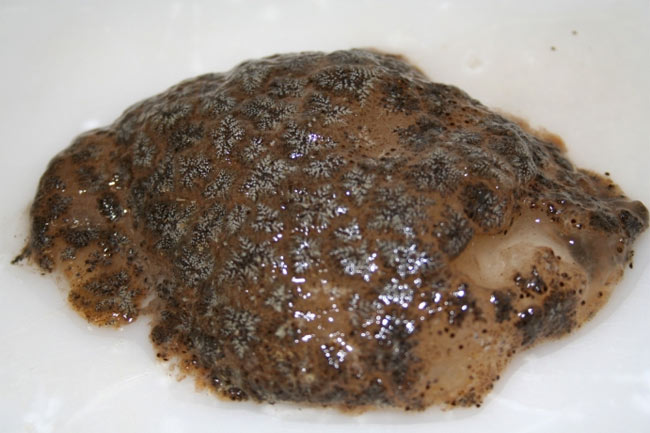Mysterious Lake Blob Identified as Alien Bryozoan

A bizarre brown and yellow blob discovered in a man-made lake in Newport News, Va., last week set off wild speculation.
Some people thought the 4-foot blob was a leftover Halloween prank, perhaps a fake lake monster. Others thought it might be an alien cocoon pod, such as those seen in films like "Invasion of the Body Snatchers." Still others guessed that it might be the bloated corpse of a large snake or other animal.
One of the men who found it, Charlie Schmuck, was immediately intrigued: "We took a stick and poked at it, and it was spongy and squishy. And that's kind of weird... The texture appears to be that of a rock with algae spots on it — it is brown and yellow, with a pattern of some type.”
Zoologists from the Virginia Institute of Marine Science were asked to examine the unidentified floating object, and quickly concluded that it was a stellar specimen of Pectinatella magnifica. That is, a bryozoan — a creature (actually a colony of tiny creatures) that filters and consumes algae from the water.
The talk of aliens, as it turned out, was actually fairly accurate. The bryozoan is indeed alien — to that freshwater lake anyway. Bryozoans are common in salt water, but relatively rare in freshwater. Scientists speculated that the animal had been introduced to the lake from mud on a migrating bird's foot.
Benjamin Radford is managing editor of Skeptical Inquirer science magazine; his Web site is www.RadfordBooks.com.
Get the world’s most fascinating discoveries delivered straight to your inbox.



